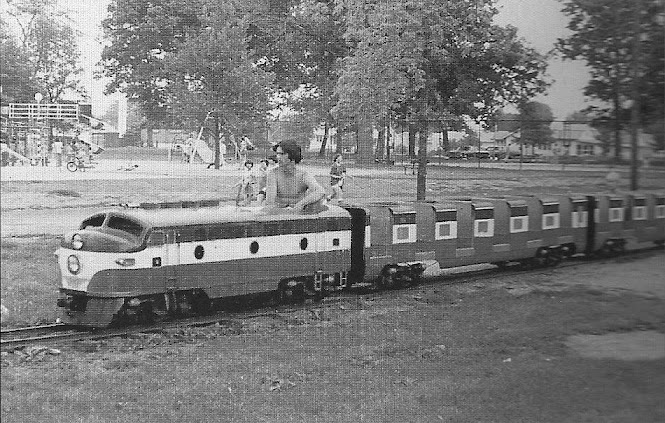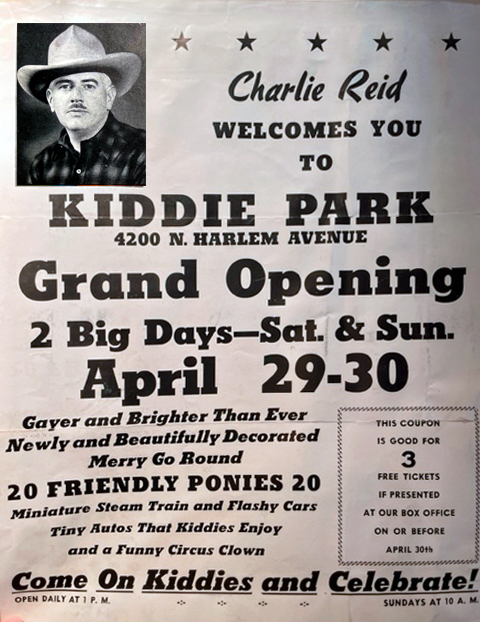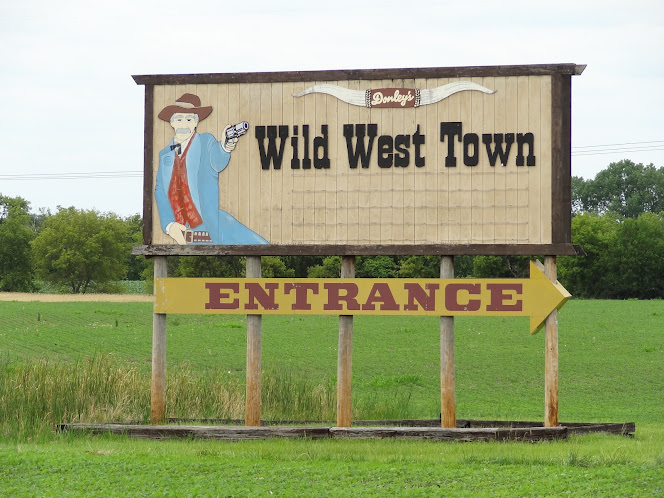In historical writing and analysis, PRESENTISM introduces present-day ideas and perspectives into depictions or interpretations of the past. Presentism is a form of cultural bias that creates a distorted understanding of the subject matter. Reading modern notions of morality into the past is committing the error of presentism. Historical accounts are written by people and can be slanted, so I try my hardest to present fact-based and well-researched articles.
Facts don't require one's approval or acceptance.
I present [PG-13] articles without regard to race, color, political party, or religious beliefs, including Atheism, national origin, citizenship status, gender, LGBTQ+ status, disability, military status, or educational level. What I present are facts — NOT Alternative Facts — about the subject. You won't find articles or readers' comments that spread rumors, lies, hateful statements, and people instigating arguments or fights.
FOR HISTORICAL CLARITYWhen I write about the INDIGENOUS PEOPLE, I follow this historical terminology:
- The use of old commonly used terms, disrespectful today, i.e., REDMAN or REDMEN, SAVAGES, and HALF-BREED are explained in this article.
Writing about AFRICAN-AMERICAN history, I follow these race terms:
- "NEGRO" was the term used until the mid-1960s.
- "BLACK" started being used in the mid-1960s.
- "AFRICAN-AMERICAN" [Afro-American] began usage in the late 1980s.
— PLEASE PRACTICE HISTORICISM —
THE INTERPRETATION OF THE PAST IN ITS OWN CONTEXT.
Zoo Park and Pleasure Resort was an ambitious but short-lived amusement park on nearly 200 acres at North Eighth Street Road, north of the Illinois State Fairgrounds.
 |
| The Giant Racer roller coaster at Zoo Park and Pleasure Resort in Springfield, Illinois. |
Work began on Zoo Park in 1906, a year when many people apparently believed Springfield was deficient in recreation opportunities. In April, the Illinois State Register reported that, in addition to Zoo Park, another development group had started construction of Springfield's White City Park, an amusement park off East Cook Street, and major renovations were underway at “Springfield’s old stand-by,” Mildred Park (located where Bunn Park is today). The already popular Irwin’s Electric Park near Auburn also was adding attractions, the story said, and plans were in the early stages to create another park near Clear Lake, between Springfield and Riverton.
Some plans for Zoo Park were accomplished, including the construction of the Giant Racer roller coaster and the dance pavilion. But the park ultimately failed because streetcar lines were never extended past the fairgrounds and because of competition from Springfield's White City Park, which was closer to the city and had much better transportation connections.
On September 20, 1906, an article in the Illinois State Register reported developers were dreaming of “an amusement resort much larger than exists in any other western city.”
Construction work on the gigantic coaster, which is 1,900 feet long, is almost finished, and painters are at work on it and on the large arcade, erected to contain the myri(a)d of small attractions.
The arcade, like all of the buildings now in progress of erection …, is very large, being 75×365 feet, and with a beautiful architectural roof.
A lake, partly natural and partly artificial, is also completed and has a ground area of thirty acres. But two or three boats are now in use, but a large fleet will be built in the Zoo workshops this winter and put in readiness for the spring opening.
That story, like many others to come, was optimistic about a streetcar connection. Grading and surveying were well underway, the Illinois State Register said, and workers “will soon begin the erection of a bridge across Spring Creek. This will open the line into the Zoo Park, proper.…”
However, the park’s organizers struggled to convince the Illinois Department of Agriculture to grant a streetcar right-of-way along the west side of the fairgrounds, and the streetcar route never came to pass.
Newspaper stories say stock in the venture ─ four separate companies were incorporated in connection with Zoo Park, although the main one seems to have been the Illinois State Zoo and Amusement Company ─ was sold across the state. A group of stockholders from Belleville, seeing no return on their money, began in 1909 to question how it had been spent.
An Illinois State Journal article on the Belleville investigation, however, suggested the Zoo Park company had largely played fair with its investors.
The Zoo Park … gives evidences now of the expenditures of several thousand dollars. The giant coaster, said to be only 120 feet short of a mile in length of track, has been almost finished. There are three pavilions in the 223-acre tract, one for dancing, another for café purposes and the third for billiards and pool. The penny arcade, 365 by 75 feet, is partially finished. Back of the arcade is a small pony track.
A small lake is at the south part of the park. The lake has been partially stocked with fish and several small boats have been placed on it.
All lots included in the addition have been sold, according to an employe of the Zoo and Amusement company.
As the streetcar line continued to meet delays, the Journal added, “Some effort was exerted to interest people in the project of carrying patrons to and from the park in automobiles and carriages, but the matter soon slumbered.” Other 1909 stories reported the road from the fairgrounds to the park had been graded, “putting it in good condition for pleasure driving,” and that a bus line was to operate to the park on Sundays.
It’s not clear if the bus ever ran. But that’s just one of the uncertainties about Zoo Park more than a century later. For instance, contemporary newspaper stories give a range of sizes, anywhere from 178 to 238 acres, for the Zoo Park property. (It’s possible that some of those estimates included Olentangy Heights while others did not.)
Various newspaper stories, probably based on statements from the park’s operators, gave the length as 1,200, 1,900, and over 5,000 feet (a mile is 5,280 feet).
Whatever its length, it’s also not clear whether the coaster ever ran. Reports written long after the park folded usually say the ride was never completed and no one ever used it. In addition, newspaper articles published at the time, though they regularly mention the roller coaster at Springfield's White City Park, make almost no similar references to Zoo Park’s “Velvet Coaster” being in operation.
Riverview Amusement Park in Chicago had a roller coaster called the "Velvet Coaster." It opened for the 1907 season and closed at the end of the 1919 season. It was 2,200 feet long.
But there is one such mention: An Illinois State Register brief published on September. 22, 1912, suggests Zoo Park’s roller coaster actually did run.
By 1912, rather than selling tickets to the general public, the park seems to have catered mainly to outings held by church groups, clubs, labor unions and similar organizations. The mention was in the Illinois State Register’s “High School Notes” column. (Springfield High was the city’s only public high school at the time.) The item says, in full:
The entire school will take a hay rack ride next Friday to the Zoo Park where lunch will be served free to all; boating, fishing, swimming and the roller coaster will tend to make the time go fast.
Zoo Park also had a zoo, although, again, some later coverage said the only animals it held were “one camel, a small herd of deer and buffalo and a few monkeys.” That may have been true later in the park’s existence, as Zoo Park sold all its animals except “those that eat grain and hay” to the Jones Brothers Circus sometime before 1909.
Earlier, however, the park had a real zoo, at least for a time. Among its inhabitants were two lions, Nero and Nellie, who attacked a maintenance worker on March 15, 1907.
The animals had been confined to a small anteroom while their main cage was being painted, but they somehow jarred the door loose and attacked the painter, Maxoumi Ben-Rahman. He was rescued by the lions’ owner and trainer, identified in the Illinois State Register’s story only as “Senor Cardona,” and the park’s manager.
"They ran to the cage and found the Arab lying upon his back with the lion, Nero, standing with one foot upon his chest. Cardona dashed into the cage and the lion was beaten back to the corner."
Ben-Rahman, whom the newspaper described as “the Arab who was seen so many days last summer driving the donkey around the city in the interests of the Zoo,” was not seriously injured.
sidebar
Another of Cardona’s lions, Sappho, was the mother of the first two lion cubs ever born in Springfield. She gave birth on March 1, 1907, at Johnny Connors’ Empire Theatre, where Cardona and his lions were performing. However, both cubs were accidentally smothered by their mother shortly after birth.
Picnics and similar outings were held frequently at Zoo Park well into the decade, starting in 1910. However, the park could never overcome its remote location and competition from Springfield's White City Park, so in February 1919, Judge E.S. Smith appointed a receiver for the bankrupt park. At the time, the park’s debts were stated at $12,000, while the land was estimated to be worth $35,000 and the park’s other assets at $4,000.
The land was auctioned off in July, with newspaper stories revealing another discrepancy in the acreage involved. The Illinois State Register in February had reported the property totaled 193 acres, while the final sale, according to the Journal, was 179 acres.
The auction resulted in a price of $131 per acre or a total of $23,449. The buyer, Beulah Maxcy, was expected to farm most of the property, although structures on the land still included a house and “an immense pavilion, which will probably be changed into a barn,” the Journal said.
Even the auction didn’t come off without a hitch, however. Maxcy’s $131 was topped by another auction patron, Santo Salamone. The two continued to raise each other until Maxcy refused to top Salamone’s $140 price. It turned out, however, that Salamone, a railroad worker and recently returned World War I veteran, thought he was bidding only on a single acre.
“They can buy the rest,” he said. “I only have money for one.”
Auction organizers rebid the sale. Maxcy was awarded the contract at the $131 per acre that had been her final offer before Salamone joined the bidding.
The Journal writer concluded with what was probably intended to be the obituary of the Zoo Park.
Zoo Park and Pleasure Resort's Giant Racer roller coaster was dismantled in 1917.
This property, at one time, held great promise for its promoters, who incorporated their amusement company at $100,000. It failed in its promise and had passed to private ownership, and former haunts of amusement soon will boast nothing else but grazing cattle and growing crops.
In 1925, the Zoo Park pavilion was remodeled and reopened for dancing several nights a week to combos like Bradley’s Orchestra and Chicago’s Ernie Young’s Orchestra. In July, local dancers Harry Miles and Max Forman introduced the Charleston, “a new dance from the East,” to Zoo Park patrons. The pavilion featured a “polished hard maple floor, 3,516 feet of dancing space, a wide veranda with seats and beautiful decorations,” ads said.
The next year, operator George Pehlman remodeled the pavilion again – to a Spanish atmosphere – and renamed it the Coral Gables. As a dance hall, Coral Gables endured a couple more years, hosting regular “hotsy-totsy” dances featuring the Frank Hodalski Orchestra in 1928 and 1929. However, the club apparently did not reopen in 1930.
The park’s last gasp apparently was as a picnic site under the name Greenwood Park in 1937. Finally, in 1941, a Journal classified ad offered “white pine framing and sills for sale; an old Zoo Park building one mile north of the fairgrounds on North Eighth Street Road.”
The former park site now is the location of widely spaced rural homes north of the Springfield Sanitary District’s Spring Creek sewage treatment plant.
Olentangy Heights, in Springfield, Illinois, began selling and constructing homes in 1949.
By Sangamon County Historical Society
Edited by Dr. Neil Gale, Ph.D.


















































